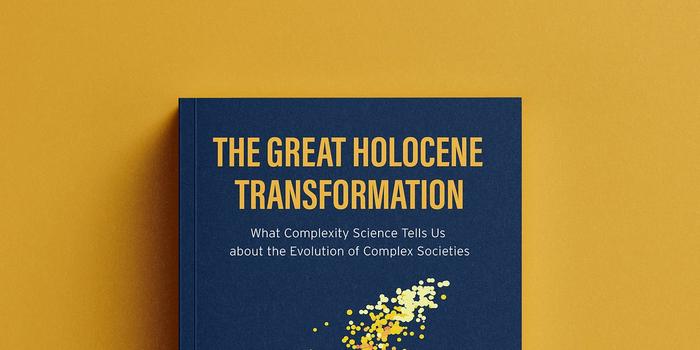In an ambitious leap forward for the scientific understanding of human societal evolution, Peter Turchin, a leading complexity scientist, unveils groundbreaking insights in his new book, The Great Holocene Transformation. Building on a decade and a half of meticulous interdisciplinary research, Turchin and his colleagues have harnessed vast datasets from the Seshat database—comprising detailed records from over 800 societies spanning 10,000 years—to illuminate the forces that shaped the emergence of complex, state-based societies that populate the modern world.
The Holocene epoch, the geological period beginning approximately 11,700 years ago, marks a pivotal chapter in human history, characterized by irreversible social transformations. Turchin’s work harnesses computational modeling and big data analytics to dissect these transitions with unprecedented precision, employing rigorous scientific methodology to interrogate traditional anthropological and historical narratives. His findings disrupt conventional wisdom that attributes societal complexity chiefly to agricultural innovation, replacing it with a nuanced portrait where intergroup competition and warfare emerge as dominant evolutionary pressures fostering social cooperation and scale.
This novel perspective stems from an exhaustive comparative analysis of competing theories—seventeen in total—integrated with dynamic modeling techniques that simulate sociopolitical processes over millennia. By synthesizing archaeological evidence, historical records, and computational simulations, Turchin demonstrates how warfare acted as a crucible for institutional innovation. Societies that developed mechanisms for large-scale cooperation, coordination, and hierarchical governance enjoyed significant evolutionary advantages in resource acquisition and territorial expansion, thereby outcompeting less organized groups.
Central to Turchin’s thesis is the dual-edged nature of warfare as a driver of social evolution. While violent competition spurred the formation of larger political entities, it simultaneously entrenched systems of oppression and social inequality within these emergent states. However, the increased scale of social organization also facilitated the creation of ideologies and institutions that foster prosocial behaviors, norms of fairness, and collective welfare. This delicate balance between coercion and cooperation underpins the complexity of modern civilizations, characterized by intricate bureaucracies, legal systems, and cultural frameworks that sustain social order.
The implications of The Great Holocene Transformation extend beyond historical curiosity, offering a scientifically grounded framework to understand contemporary social dynamics and potential future trajectories. By elucidating the deep-rooted role of conflict and cooperation in societal evolution, Turchin’s work invites reconsideration of modern geopolitical tensions, nation-building processes, and resilience mechanisms in the face of global challenges. His interdisciplinary approach exemplifies the power of complexity science to bridge the gap between quantitative data and social theory.
Turchin’s integration of computational methods with big data analytics represents a paradigm shift in historical sciences, traditionally reliant on qualitative analysis and fragmented evidence. The quantitative rigor of the Seshat database, coupled with agent-based models and statistical hypothesis testing, allows for robust examinations of causal relationships across vast temporal and spatial scales. This methodological advance sets a new standard for empirical social science, establishing a replicable template for future research exploring the evolution of human societies.
The book underscores how technological and cultural adaptations emerged as responses not merely to environmental pressures but to intersocietal competition. Warfare incentivized innovations in governance, law enforcement, resource distribution, and ideological coherence to maintain internal cohesion and external competitiveness. These evolutionary feedback loops contributed to the scalability of social systems, facilitating transitions from hunter-gatherer bands to complex urban states with diverse political and economic institutions.
Moreover, Turchin’s exploration reveals how social complexity entailed significant trade-offs. Institutional complexity enhanced a society’s capacity for coordination and growth but often entrenched elite dominance and systemic inequalities. Nonetheless, the resulting centralized states created conditions conducive to long-term stability, societal cohesion, and cultural flourishing. Understanding this historical dialectic provides insight into the origins of social hierarchies and the persistence of cooperative frameworks within human civilizations.
The Great Holocene Transformation also confronts the contingency of historical outcomes, demonstrating that the trajectory toward state-based societies is neither inevitable nor uniform. By employing computational simulations calibrated with empirical data, Turchin highlights diverse pathways societies have traversed, shaped by local ecological contexts, technological capabilities, and patterns of warfare. This plurality of evolutionary routes emphasizes the complexity of social dynamics and cautions against oversimplified deterministic explanations.
This synthesis of big data, computational science, and social theory presents a compelling argument for the critical role that conflict-induced social selection played in shaping modern human institutions. It invites scholars, policymakers, and the public to reexamine how we conceptualize societal progress—not merely as linear advancement but as complex adaptive responses to multifaceted selective pressures.
Peter Turchin’s new contribution stands as an authoritative work, merging decades of data and modeling to rewrite the narrative of human social evolution. His fusion of rigorous scientific analysis with broad interdisciplinary perspectives offers a transformative lens through which to view the past and anticipate future collective developments.
As societies today face unprecedented challenges, from political fragmentation to ecological crises, the lessons drawn from humanity’s Holocene transformation offer valuable insights into mechanisms of resilience, cooperation, and conflict. The Great Holocene Transformation thus serves both as a monumental scholarly achievement and a timely reflection on the intricate forces that have forged—and continue to influence—the complex societies on which we depend.
Subject of Research: Evolution of complex societies driven by warfare and intergroup competition during the Holocene epoch.
Article Title: The Great Holocene Transformation: Unraveling the Role of Warfare in Human Social Evolution
News Publication Date: October 8, 2025
Web References:
Image Credits: Beresta Books
Keywords: Archaeology, Social sciences, Anthropology, Holocene, Holocene epoch, Warfare, War




